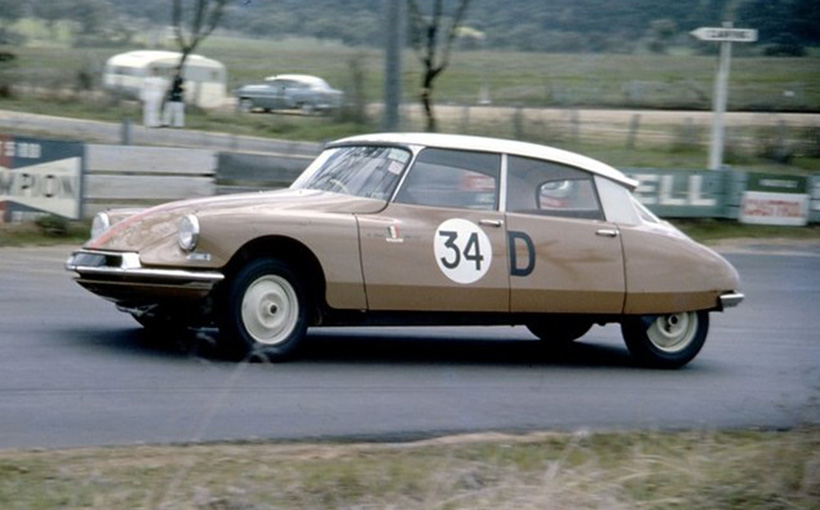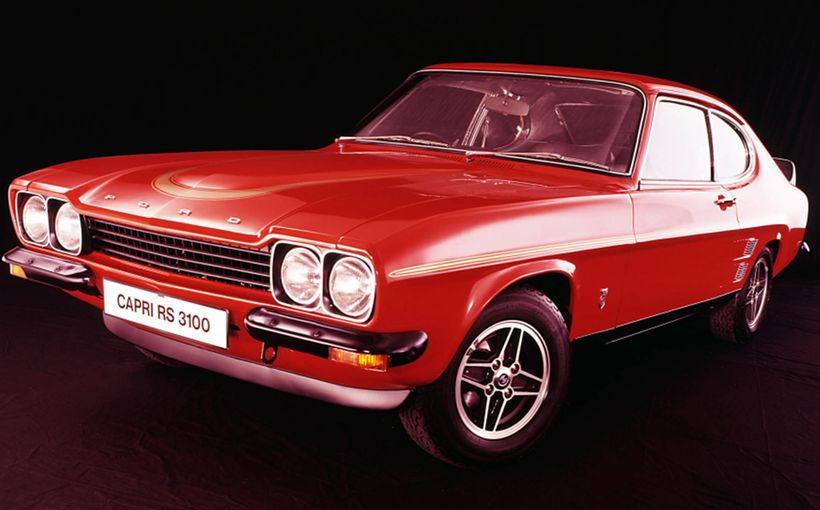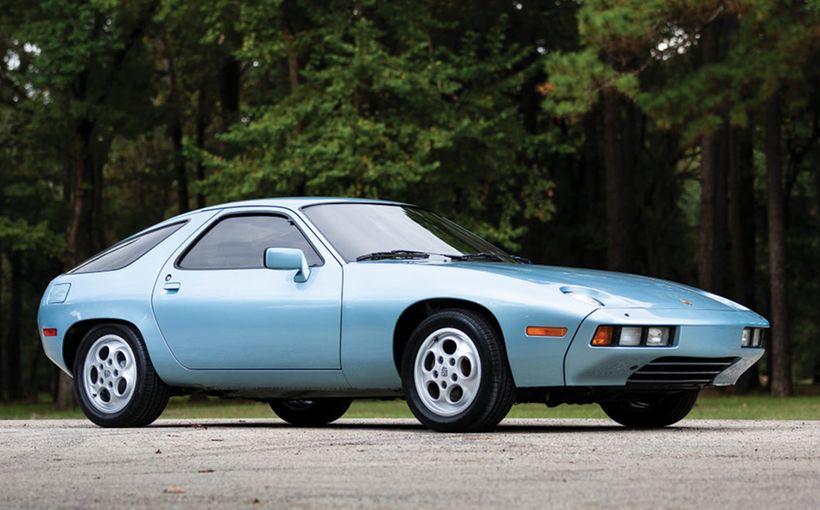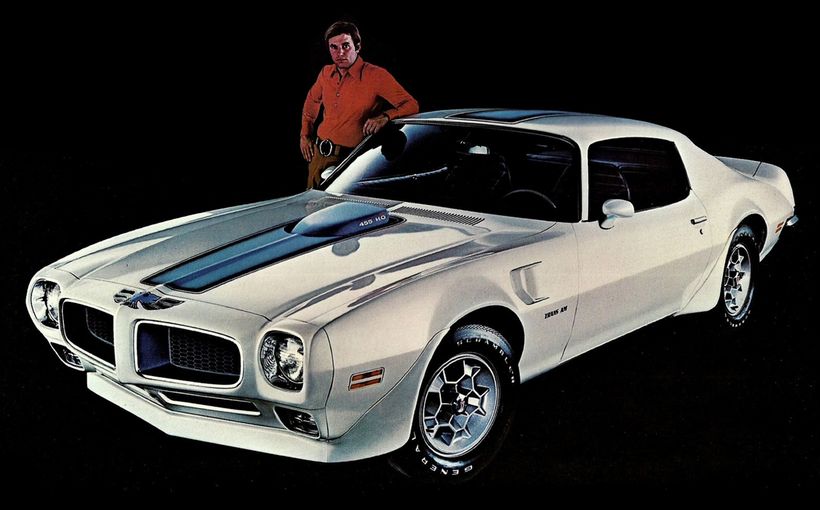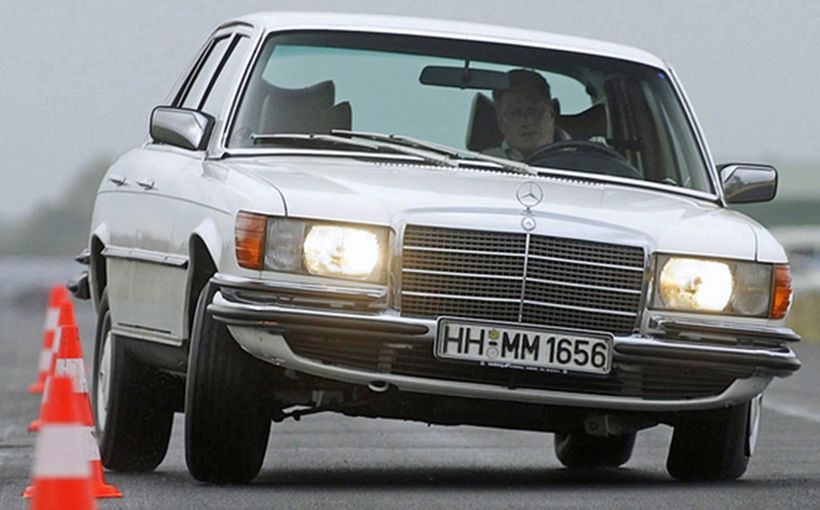Citroen DS/ID: From Mount Panorama to The Marathon

“It was terrific to drive because we could run it flat-out all day, as fast as it would go,” said racing great Brian Foley when quizzed about the Citroen ID19 he shared with Bill Buckle in the 1964 Armstrong 500 at Bathurst.
“It could out-brake everything around it with those big inboard front discs and when you put your foot on the brake at the end of Conrod, the first thing that would happen (with its self-levelling suspension) was all the pressure went out of the back of the car and it dropped right down.
“So where most cars would be standing right up on their noses with their back ends dancing around, this thing would just sit down nice and level, which made the braking even better because it was so stable and predictable.
“Most other cars would start braking at about the 300-metre mark, but you’d just go sailing straight past them with your foot flat on the accelerator until you reached the flag marshall’s post. When you saw the whites of their eyes, you knew it was time to brake!”

The annual 500-mile (800 km) race for stock standard production cars, which started at Victoria’s Phillip Island circuit in 1960 before moving to its permanent home at Mount Panorama in 1963, hosted a staggering variety of makes and models in those early years.
And it would be hard to think of a vehicle more unusual or intriguing than Citroen’s DS19. It stunned the motoring world when launched in 1955 with its futuristic aerodynamic styling, innovative hydropneumatic self-levelling suspension, inboard front disc brakes and other cutting-edge technologies that set new benchmarks in automotive design, ride quality, handling and braking.
Such extravagance didn’t come cheap, though, which prompted Citroen to produce a more affordable lower-spec variant called the ID19. This formed the basis of a unique Australian ID19 which commenced local assembly in 1961.
This was a crucial development for teams wanting to enter the Citroen in The Great Race, as the rules for the 1962 Armstrong 500 at Phillip Island limited entries only to cars manufactured or assembled in Australia.

1962 Armstrong 500
The debut of the new ID19 at Phillip Island in 1962 was also the first time the famous French marque was represented in the Armstrong 500.
And given the mayhem caused by a brittle bitumen surface that disintegrated during the race, it could not have picked a better time to prove its prowess on what turned into one of Australia’s toughest test tracks.
The four competing classes were based on retail prices, designed to showcase a broad spread of makes and models proving their speed and durability under the strain of competition.
The Citroen was grouped in Class A which catered for the most expensive cars priced from £1251-2000. It attracted an interesting mix of entries including the big V8-powered Studebaker Lark, Ford’s Zephyr Mk III, Chrysler’s Valiant R & S series sedans and a Vauxhall Velox.

By any measure the Citroen ID19 was a big car, riding on a generous 123-inch (3124mm) wheelbase with a kerb weight in excess of 1.2 tonnes.
Yet its front wheels were powered by a relatively small 1.9 litre four cylinder engine sitting well behind the front axle line that produced just under 70 bhp (51kW). In terms of raw speed, it was always going to struggle against its six and V8-powered class competitors.
Three Citroens were entered, headed by Norm Beechey and Greg Cusack in an ID19 which could loosely be described as a ‘works’ entry as it was backed by local assemblers and distributors, Continental & General.
This was a startling change in racing equipment for Beechey and Cusack, given that they were driving for David McKay’s multi-car Scuderia Veloce Motors (SVM) team at the time – Cusack in a Lola-Climax and Beechey in his brutish big block V8 1962 Chevrolet Impala.

Bill Buckle and Brian Foley fronted with another ID19 backed by SVM, with a third car entered by Citroen dealers Wallace & Stable for Victorians Bill Wilson and Mike Ide.
“Bill Buckle had some involvement with Citroen at the time,” Foley explained. “His family sold Citroens through their Buckle Motors dealership in William Street, Sydney. Bill also did some of his training as a mechanic in France with Citroen.
“Bill and I were good mates so he asked me if I’d like to have a drive in the Armstrong 500. Naturally I accepted, because having a drive with a mate is always good fun. Things got pretty tough in the race, though, because the track started to fall apart which damaged a lot of cars.”
The Citroens represented one of 18 different models amongst the strong 41-car entry. In those days, grid positions were drawn by ballot and at the start of the race each of the four classes were released at 10-second intervals. And, logically, in alphabetical order.

There was no acknowledgement of an outright winner back then. The emphasis was on class victories and mechanical durability. No pit stops were allowed until at least lap 35, so if a car got in trouble before that, the only team member allowed to work on it was the driver.
In the early laps the Citroens were clearly outgunned by their faster and more powerful competition in Class A, but it didn’t take long before the advanced self-levelling suspension on the French cars started to prove an advantage as the track started to crumble.
In Australia’s Greatest Motor Race, author Bill Tuckey described the chaotic scenes:
“Weeks of heavy rain beforehand had undermined much of the thin surface and even practice saw big holes and patches begin to grow where the bitumen layer literally was simply disappearing.
“Few parts of the circuit stayed intact. The worst corner was Siberia, over on the ocean side, where midway through the race there was a hole a metre wide and almost two metres long and contemporary accounts said six inches (150mm) deep. The result was what resembled nothing so much as an eight-hour special stage of a round-Australia trial.”

Brian Foley’s memories of that hectic day more than five decades ago remain vivid, as lots of windscreens (which under the race rules had to be laminated) were cracked and radiators holed by flying stones. The growing minefield of pot holes was also brutal on tyres and suspensions.
“The hydropneumatic suspension was probably a lot better than the other cars on that track,” Foley recalled. “Even so, at one section (Siberia) eventually we ended up having to drive right off the circuit each lap just to get around the corner, because the pot holes were so bad.”
The new Citroens showed impressive reliability in their first attempt at the car-busting event, with all three French cars finishing strongly after more than eight hours of gruelling competition.
Beechey/Cusack was the highest placed Citroen crew in Class A, finishing an impressive third behind the more powerful Ford Zephyr and class-winning Studebaker Lark V8. Buckle and Foley finished fifth in class, two laps clear of the third ID19 driven by Wilson/Ide into sixth place.

1964 Armstrong 500
There were no Citroens in the first Armstrong 500 held at Mount Panorama in 1963, but a lone example of the French marque was on the grid for the 1964 race.
Bill Buckle and Brian Foley had teamed up again, but this time behind the wheel of another ID19 with the latest local updates, including a more streamlined nose and a slight increase in engine power which according to Foley produced a top speed down Conrod Straight of around 105 mph (168 km/h).
The updated ID19 also adopted the DS model’s more advanced braking system, which tapped into the suspension’s hydraulic circuit to operate them. Foley said pressing a button on the floor rather than a conventional pedal when braking was unusual, but easy to adapt to.
The Sydney-based pair already had Citroen racing experience on the Mountain having shared an ID19 in the 1962 Bathurst Six-Hour race for sports cars and touring cars in September 1962.
This was the same tan-coloured SVM car they raced in the Armstrong 500 at Phillip Island just three weeks later.

Although outgunned in pure speed terms, Buckle and Foley had a reliable run in the six-hour race finishing fourth in Class D (Touring Cars £1251-1700) behind the class-winning V8 Studebaker Lark and two Fiat 1500s.
So the Citroen boys at least knew what to expect in the 1964 Armstrong 500, where they would again face strong competition from the most expensive cars in the race priced between £1201-2000 (Class D). These rivals included Studebaker Lark, Ford Zephyr Mk III, Triumph 2000, Valiant S series, Humber Vogue, Vauxhall Velox and even an EH Holden Premier.
In typical Citroen fashion, pre-race preparation was minimal as Buckle and Foley knew the car had the quality of engineering required to be driven flat-out for more than seven and a half hours without any problems.
“I think all we did was put a few road miles on it before the race to run it in properly,” Foley said. “There wasn’t much you could do within the rules to improve it really, because it was so good straight off the showroom floor. I think we put some harder brake pads and linings in it, but that was about it.”

Buckle and Foley certainly practiced what they preached about the French sedan’s many attributes, as they outlasted most of their competition to finish third in Class D; beaten only by the faster V8 Studebaker Larks.
The Citroen crew did not change any brake pads or Michelin X radials during the race. And what the 1.9 litre four cylinder engine lacked in power was more than compensated for by the car’s flawless durability, slippery high speed aerodynamics and brilliant handling and braking that Foley still marvels at today.
“Going up the hill at Bathurst she was pretty slow, obviously, but you could literally drive it flat-out everywhere,” he recalled. “You never had to worry about wearing out tyres or brakes so you just drove it as fast as it could possibly go, which was remarkable for a stock standard road car.

“The front track was a lot wider than the rear track (200 mm), so it went around the corners pretty well and had terrific turn-in. As the race wore on, the braking got really bad for a lot of cars and some lost them completely, but the Citroen never changed.
“I do remember that it was bitterly cold at Bathurst that weekend, too, so we had the heater running all day. With those superb seats, the self-levelling suspension and all, it was the most comfortable drive I ever had at Bathurst!”
1964 was the first and last time the two Sydney drivers would race a Citroen ID on the Mountain.
By 1965 Bill Buckle had established a new Toyota dealership, as the burgeoning Japanese brand took its first tentative steps in Australia. Buckle switched to racing one of the new Toyota Coronas in the 1965 race, while Foley starred in a works-backed Mini Cooper S for BMC Australia.

1968 Hardie-Ferodo 500
Although not a locally-assembled car, the first and last appearance of a Citroen DS in the Bathurst 500 is worthy of a mention.
This occurred in 1968, when an imported DS21 Pallas made a surprise appearance in the hands of Queensland racing ace Glyn Scott and advertising executive and Formula Vee driver, Bill Daly.
From a competitive viewpoint, the entry of a DS21 in its heaviest and most luxurious Pallas specification in Class E (cars costing more than $4500) was surprising, as it didn’t stand a chance of beating the very quick Alfa Romeo 1750 GTV, of which there were several.
As happened so often at Bathurst in those care-free times, it was more a case of a couple of mates getting together to have a run and a bit of fun in Australia’s greatest motor race.

The Scott/Daly Citroen was certainly eye-catching, with its headlight covers dressed in very human-looking eyelids and long feminine lashes, with the right eye displaying a cheeky wink. At least they had a sense of humour.
As expected, the Citroen was completely outclassed by the Alfas which ran away with Class E. And the big French sedan appeared to be more than a handful for Bill Daly, according to Bill Tuckey’s analysis of the 1968 race:
“But the final postscript was Bill Daly’s. Forrest’s Elbow finally got him when the dreaded understeer took over for the third time and the Citroen did a spectacular wall-of-death act right up to the top of the three-metre-high clay bank. It ended its race on a tow truck.”

DS21: Moral victor of the 1968 London-Sydney Marathon
The Citroen DS and ID were not well suited to circuit racing, particularly at Bathurst. Sure, they could be driven hard all day without missing a beat, but being large and heavy with a small four cylinder engine they did not have the critical power-to-weight ratios needed to be genuine contenders for either class or outright honours.
Conventional logic would suggest the same shortcomings would have applied to rallying, but then these were very unconventional vehicles. They proved to be formidable rally cars on a global scale.
And it seemed the rougher the terrain, the better they performed, often beating faster and more powerful opponents due to their superiority in covering vast distances at sustained high speeds with minimal effort and maximum driver comfort.
Preferences differed amongst Citroen rally drivers about the hydraulic (DS) and manual (ID) transmissions. Some preferred the simplicity of the ID’s conventional clutch pedal and gearshift arrangement, while others were dedicated to the DS’s more complex hydraulically controlled pre-selector shift, claiming it was faster and less tiring.

The Citroen DS was an instant class winner when it made its rallying debut in the 1956 Monte Carlo Rally. In 1959 it won the Monte Carlo outright and the European Rally Championship. More Monte Carlo crowns and national rally championships saw the Citroen DS dominant in European rallying by the mid-1960s.
It was then Citroen started to venture outside Europe, competing with distinction in gruelling events like the East African Safari as it proudly put the car on a global stage to take on the world’s best.
This was never better demonstrated than in the 1968 London-Sydney Marathon, when works drivers Lucien Bianchi and Jean Claude Ogier in their Citroen DS21 (with larger 2.1 litre engine) were headed for what looked like certain victory after a brilliantly judged drive.
However, they were to meet some tragic misfortune on a transport stage not far from the finish line in Sydney. With Ogier at the wheel and Bianchi snoozing in the passenger seat, the leading Citroen collided heavily with a spectator’s car coming the other way.

Bianchi was badly injured and the leading Citroen was wrecked. As a result, Andrew Cowan/Colin Malkin/Brian Coyle became the surprise winners in their UK-prepared Hillman Hunter.
Three Citroen DS21s were entered for the Marathon. Two were factory entries for two-man crews including Ogier/Bianchi and Neyret/Terramorsi, with a third car sponsored by the Automobile Club de France shared by Vanson/Turcat/Lemeries.
Although factory-prepared, the Marathon Citroens were remarkably close to standard road car specifications.
The most noticeable change was made to the rear quarter panels, which left the wheels fully exposed to make wheel/tyre changes easier and faster. Lightly framed bull bars and numerous driving lamps were fitted and all hydraulic lines were moved inside the cabin to avoid damage.
The dashboards were equipped with extra instrumentation and the engines were slightly detuned (lower compression ratios) to ensure they could cope with the lower grade fuels they were sure to encounter along the way.

The London to Sydney Marathon’s 16,000 km course passed through 10 countries on the first leg from London to Bombay, which included England, France, Italy, Yugoslavia, Bulgaria, Turkey, Iran, Afghanistan and Pakistan to the Indian coast.
Of the 98 starters that left London on November 24, only 72 reached Bombay. British rally ace Roger Clark and his Swedish co-driver Ove Andersson in a works-entered Ford Lotus-Cortina Mk II had set a cracking pace during the first leg, ahead of Lampinen/Staepalaere in a German-entered Ford Taunus and Bianchi/Ogier looking menacing in third place in their DS21.
On December 5 the surviving cars and crews departed India aboard the SS Chusan and after a nine-day voyage docked in Fremantle. The following day they left Perth for another epic drive, this time to the other side of Australia. Only 56 of the original 98 starters would make it to Sydney on December 18.

After leading all the way to Bombay, Roger Clark was blitzing the field during the Australian leg, too, until engine problems in South Australia and ultimately differential failure in Victoria ended their gallant run.
At that stage there were only a handful of points separating new leaders Bianchi/Ogier and their closest pursuers, but they could not catch the leading Citroen crew in the remaining special stages. Bianchi and Ogier were then headed for certain victory - until that fateful crash.
Protect your Citroen. Call Shannons Insurance on 13 46 46 to get a quote today.

